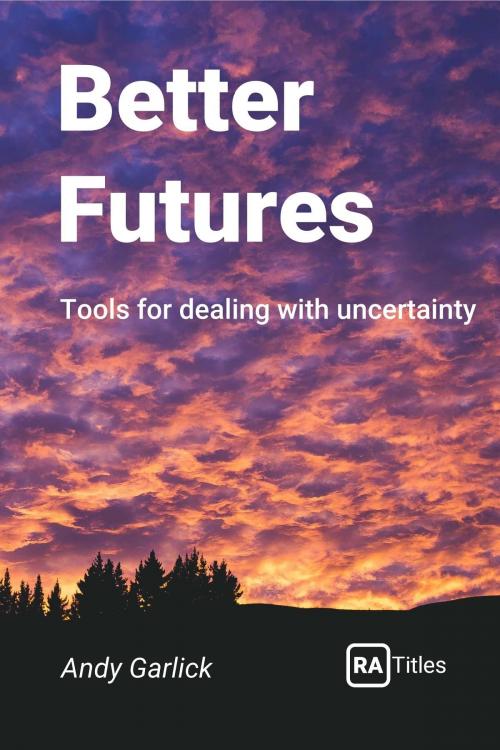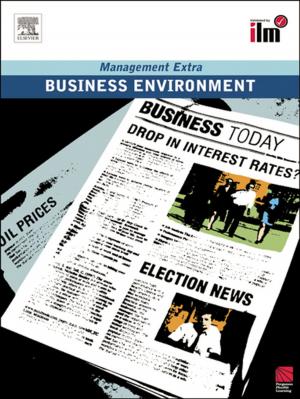Better Futures
Tools for dealing with uncertainty
Business & Finance, Industries & Professions, Insurance, Nonfiction, Science & Nature, Technology, Engineering, Management & Leadership, Management| Author: | Andy Garlick | ISBN: | 9781999664510 |
| Publisher: | Risk Agenda Limited | Publication: | April 30, 2018 |
| Imprint: | RA Titles | Language: | English |
| Author: | Andy Garlick |
| ISBN: | 9781999664510 |
| Publisher: | Risk Agenda Limited |
| Publication: | April 30, 2018 |
| Imprint: | RA Titles |
| Language: | English |
Better Futures is not just a textbook on risk management. It provides new perspectives to help you embed risk management into your organisation in a more natural way; the aim is to ensure you maximise your opportunity to enjoy ‘better futures’ rather than worse ones, taking account of the many aspects of uncertainty you and your organisation face.
The book is based on the author’s experience of working in risk over 35 years where he saw many examples of dysfunctional ‘common practice’ risk management. He deconstructs every aspect of this practice and rebuilds it into a structure which is more logical and better adapted to embedding in organisations. The work is based on a number of simple principles. For example, there are no risk management processes, just processes which recognise the inevitable risk and uncertainty.
The proposed model has three layers.
- The natural risk management layer builds on what managers have been doing naturally for millennia, augmented by modern and customised approaches to risk analysis.
- The management layer contains the additional activities which are necessary to make this work within the modern organisation, alongside budgeting and other control activities, and providing stakeholders with information.
- The governance layer provides the organisation with the means to manage risk consistently and visibly across many spans of control, including external stakeholders, clients, suppliers and contractors.
Because there are no dedicated risk processes, the material is presented as a number of tools which the risk manager can adopt in a way which best fits their organisation and its environment.
An important aspect of natural risk management is building the appropriate risk culture. This is a subject which has been recognised only relatively recently and a major chapter is devoted to explaining what is known about this topic: how it can be measured and how it can be improved both to match the culture of the organisation and to deal more effectively with risk.
Risk management is most of all about making decisions in the face of risk and uncertainty. This is a neglected topic in most risk management thinking which leads to some very inappropriate recipes. Because of this, Better Futures also contains a detailed chapter on the theory of decision making which covers the spectrum from classical economics thinking through the psychological research and work on the nature of rationality. This is essential material for all risk managers.
Better Futures is not just a textbook on risk management. It provides new perspectives to help you embed risk management into your organisation in a more natural way; the aim is to ensure you maximise your opportunity to enjoy ‘better futures’ rather than worse ones, taking account of the many aspects of uncertainty you and your organisation face.
The book is based on the author’s experience of working in risk over 35 years where he saw many examples of dysfunctional ‘common practice’ risk management. He deconstructs every aspect of this practice and rebuilds it into a structure which is more logical and better adapted to embedding in organisations. The work is based on a number of simple principles. For example, there are no risk management processes, just processes which recognise the inevitable risk and uncertainty.
The proposed model has three layers.
- The natural risk management layer builds on what managers have been doing naturally for millennia, augmented by modern and customised approaches to risk analysis.
- The management layer contains the additional activities which are necessary to make this work within the modern organisation, alongside budgeting and other control activities, and providing stakeholders with information.
- The governance layer provides the organisation with the means to manage risk consistently and visibly across many spans of control, including external stakeholders, clients, suppliers and contractors.
Because there are no dedicated risk processes, the material is presented as a number of tools which the risk manager can adopt in a way which best fits their organisation and its environment.
An important aspect of natural risk management is building the appropriate risk culture. This is a subject which has been recognised only relatively recently and a major chapter is devoted to explaining what is known about this topic: how it can be measured and how it can be improved both to match the culture of the organisation and to deal more effectively with risk.
Risk management is most of all about making decisions in the face of risk and uncertainty. This is a neglected topic in most risk management thinking which leads to some very inappropriate recipes. Because of this, Better Futures also contains a detailed chapter on the theory of decision making which covers the spectrum from classical economics thinking through the psychological research and work on the nature of rationality. This is essential material for all risk managers.















